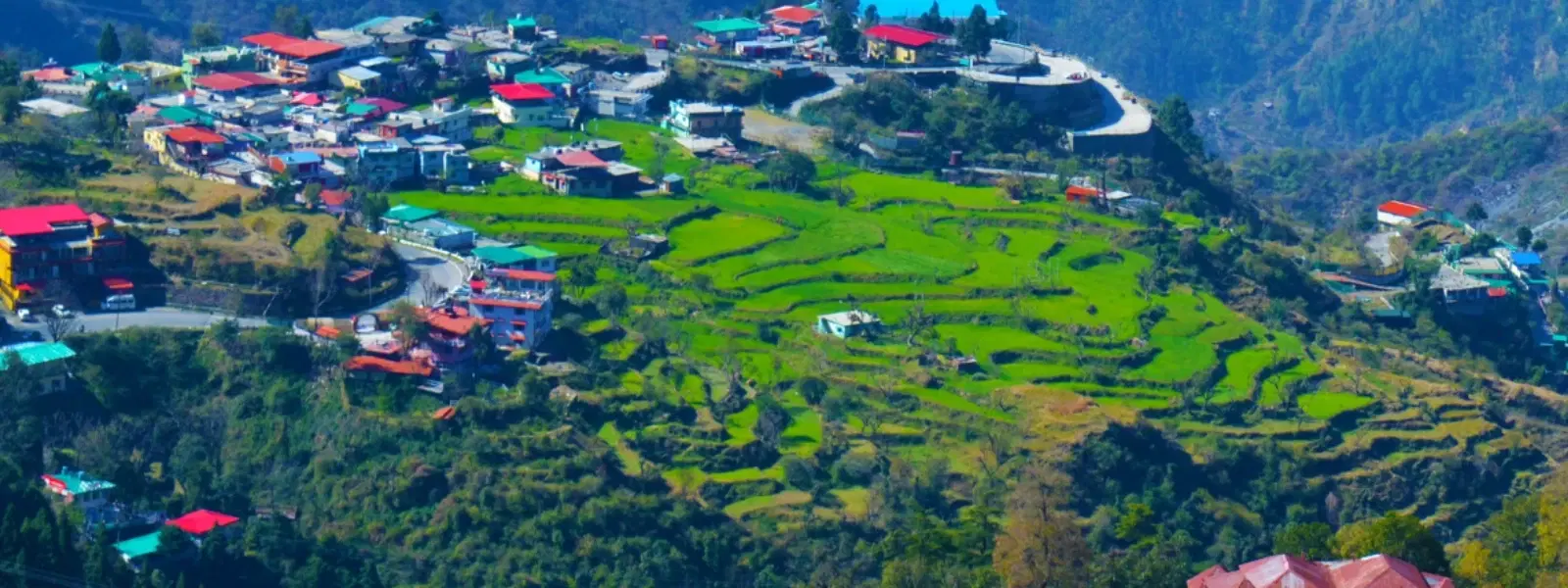
Hotels
•04 min read

Imagine a quiet village where a lush, serene forest stands untouched for centuries—a sacred grove that serves as a vibrant sanctuary for both nature and spiritual practices. In these villages with sacred groves, the intertwined legacy of biodiversity and tradition offers a unique glimpse into India's ancient methods of forest conservation and cultural preservation.
This blog delves into the profound significance of sacred groves in rural areas, exploring the cultural, ecological, and spiritual dimensions that make these natural sanctuaries so unique. From ancient village rituals to modern conservation challenges, you'll discover how these groves continue to nurture biodiversity and reinforce community identity.
Sacred groves are small patches of forest that have been preserved for their religious and cultural importance. Distinct in their undisturbed nature and rich biodiversity, these groves are often found in villages with sacred groves across India, where local communities consider them a divine gift. They are unique due to their long-standing protection from exploitation, making them reservoirs of indigenous forest preservation and natural heritage.
These groves trace their origins to ancient village rituals. Long before modern environmental laws, local people practiced traditional forest conservation through these spiritual forests in villages, believing that nature was sacred. This indigenous knowledge and a deep sense of responsibility towards nature made these groves an integral part of cultural and religious practices.
Interwoven with local legends and folklore, sacred groves symbolize the cultural significance of sacred groves and local traditions. Villages have historically managed these sites as community-managed sacred sites, where rituals, festivals, and oral histories are passed down through generations. This practice not only preserves the grove's natural beauty but also reinforces the community's identity and connection to the land.
Sacred groves are biodiversity hotspots. They shelter rare and endemic species of plants, insects, birds, and small mammals. From medicinal herbs used in traditional remedies to ancient tree species that have witnessed centuries of change, the variety of flora and fauna in these groves demonstrates the intricate ecological role of sacred groves. They serve as living laboratories for studying natural ecosystems in their untouched states.
Beyond their aesthetic and cultural importance, sacred groves contribute significantly to ecological balance. These natural areas help conserve water through forest cover, maintain soil fertility, and even regulate local climates. As buffers against deforestation and habitat loss, sacred groves offer a natural solution to some of today's most challenging environmental issues.

Much like modern protected areas, sacred groves function as refuges for flora and fauna. They preserve genetic diversity and serve as a model for traditional forest conservation. For example, the renowned Mawphlang Sacred Grove in Meghalaya, celebrated for its rich biodiversity, stands testament to how these groves can thrive when nurtured by centuries of indigenous care.
The true guardians of these natural treasures are the local communities. In many villages with sacred groves, people take pride in their role as custodians of nature. Their hands-on management and traditional knowledge underpin the successful preservation of these ancient sites and demonstrate a sustainable approach to environmental stewardship.
Despite their importance, sacred groves face mounting challenges. Urbanization, deforestation, and changing cultural values threaten to erode these living monuments of heritage. As modern lifestyles encroach upon traditional practices, the ecological integrity and cultural significance of these groves are at risk. The gradual loss of ancient village rituals further dilutes the communal bond that sustains them.
Yet, there is hope. Many villages are witnessing a revival of these ancient practices through community-driven initiatives. Inspiring stories emerge of locals reinvigorating their sacred groves, ensuring that traditional forest conservation endures the test of time. These efforts are a celebration of resilience, reflecting a heartfelt commitment to preserving both nature and cultural heritage.
While modern conservation often relies on technological solutions and regulatory frameworks, traditional practices offer invaluable insights. The ancient village rituals that have protected sacred groves show that sustainable living can stem from deep-rooted respect for nature. Modern conservationists have much to learn from the simple, yet effective, methods of indigenous communities.
The Indian government and various local agencies have begun to recognize the value of these natural monuments. Legal frameworks and policies are increasingly in place to protect sacred groves. However, there is a pressing need to expand and strengthen these measures to ensure that sacred groves remain safeguarded as critical ecological and cultural assets.
Looking ahead, sacred groves hold the promise of bridging traditional wisdom and modern environmental strategies. As global environmental challenges intensify, integrating the sustainable practices rooted in ancient village rituals could be key to innovative conservation solutions. The revival and integration of sacred groves into broader conservation strategies signal an inspiring path forward.

"Did you know that sacred groves are often considered the earliest form of community-driven conservation? These spiritual forests have preserved biodiversity for centuries, offering a model for sustainable living in harmony with nature."
Sacred groves are spread across India, including notable ones like the Mawphlang Sacred Grove in Meghalaya, the Devrai groves in Maharashtra, and the Sita Vanam in Tamil Nadu.
The Mawphlang Sacred Grove, located in the East Khasi Hills of Meghalaya, is renowned for its deep cultural roots and exceptional biodiversity.
India is believed to have over 100,000 sacred groves, each unique in size and cultural value across different regions.
Sacred groves are integral to local traditions, acting as venues for rituals, storytelling, and the preservation of cultural identity.
They serve as biodiversity hotspots that protect rare and endemic species, maintain ecological balance, and offer insights into natural conservation practices.
Sacred groves are far more than protected patches of forest; they are vibrant symbols of the deep relationship between nature and tradition in our villages. By embracing the wisdom of these ancient sites, we celebrate their role in traditional forest conservation and the nurturing of community spirit. The legacy of sacred groves reminds us that sustainable living can flourish when nature and culture come together in harmony.